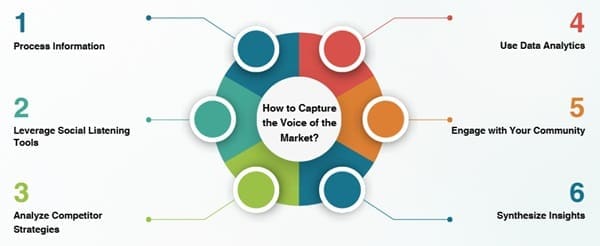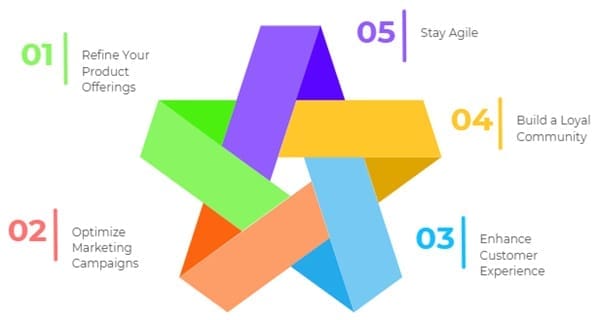The voice of market refers to the systematic collection and analysis of customer feedback, preferences, and insights that directly influence business decisions. Unlike traditional market research, this approach focuses on real-time customer experiences and genuine opinions expressed across various touchpoints.
Voice of the customer research encompasses multiple methodologies designed to capture authentic customer sentiments. Furthermore, it extends beyond simple surveys to include social media monitoring, review analysis, and direct customer interactions. Consequently, businesses gain a holistic understanding of their market position.
The VOC business term has evolved significantly over the past decade. Initially, companies relied primarily on focus groups and surveys. However, digital transformation has revolutionized how businesses collect and analyze customer feedback. Today’s VOC research leverages advanced analytics and artificial intelligence to process vast amounts of customer data.
Table of contents
What is the Voice of the Market?
The Voice of the Market refers to the collective insights, opinions, and feedback from your target audience and the broader market. It’s an extension of the Voice of the Customer (VOC), which focuses specifically on individual customer experiences.
VOM takes a wider lens, capturing trends, sentiments, and demands across your industry or niche. Essentially, it’s about understanding what your customers—and potential customers—want, need, and value.
Unlike traditional market research, which often relies on broad data sets, VOM dives deeper into qualitative insights. It combines voice of the customer research with market trends to give businesses a holistic view of their audience.
For example, a company selling eco-friendly products might use VOM to uncover growing consumer demand for sustainable packaging, even if their current customers haven’t explicitly mentioned it.
Public, Onsite, Virtual, and Online Six Sigma Certification Training!
- We are accredited by the IASSC.
- Live Public Training at 52 Sites.
- Live Virtual Training.
- Onsite Training (at your organization).
- Interactive Online (self-paced) training,
Why is VOM Important?
The Voice of the Market acts as a compass for businesses. Here’s why it’s critical:
- Drives Customer-Centric Strategies: By understanding customer pain points and desires, businesses can tailor products, services, and marketing campaigns to meet real needs.
- Boosts Competitive Advantage: VOM helps you spot market gaps and emerging trends before competitors do.
- Improves Customer Loyalty: When customers feel heard, they’re more likely to stay loyal and recommend your brand.
- Informs Innovation: Insights from VOM can spark new product ideas or improvements to existing offerings.
In short, VOM empowers businesses to make data-driven decisions that align with market demands, ensuring long-term success.
Relationship Between Voice of the Market and Voice of the Customer
While Voice of the Market and Voice of the Customer are closely related, they’re not identical. VOC focuses on individual customer feedback—think surveys, reviews, or customer service interactions. VOM, on the other hand, aggregates these insights and combines them with broader market trends. For example, VOC might reveal that customers want faster delivery, while VOM could show a growing industry trend toward same-day shipping.
Together, VOC in marketing and VOM create a powerful framework. VOC provides granular, customer-specific data, while VOM offers a big-picture view of market dynamics. By integrating both, businesses can create strategies that are both personalized and aligned with industry shifts.
Key Components of Voice of the Market
To fully understand the Voice of the Market, you need to consider several components:
- Customer Feedback: Direct input from customers via surveys, interviews, or social media.
- Market Trends: Industry reports, competitor analysis, and economic shifts that influence customer behavior.
- Social Listening: Monitoring online conversations on platforms like X, LinkedIn, or Reddit to gauge sentiment.
- Competitor Insights: Analyzing competitors’ strategies to identify what works and where they fall short.
- Data Analytics: Using tools like Google Analytics or SEMrush to track customer behavior and market patterns.
By combining these elements, businesses can build a comprehensive picture of their market and make informed decisions.
How to Capture the Voice of the Market?

Capturing the Voice of the Market requires a strategic approach. Here’s a step-by-step guide to get started:
1. Conduct Voice of the Customer Research
Start with voice of the customer research to gather direct feedback. Use methods like:
- Surveys and Questionnaires: Create targeted surveys with tools like Google Forms or SurveyMonkey to ask customers about their needs and pain points.
- Interviews: Conduct one-on-one interviews to dive deeper into customer experiences.
- Focus Groups: Bring together small groups of customers to discuss their preferences and expectations.
2. Leverage Social Listening Tools
Social listening is a game-changer for understanding the Voice of the Market. Tools like Hootsuite, Brandwatch, or Sprout Social allow you to monitor conversations on social media platforms. Look for recurring themes, such as complaints about pricing or excitement about a new product feature.
3. Analyze Competitor Strategies
Competitor analysis is a key part of VOC marketing. Study your competitors’ websites, social media, and advertising campaigns. Tools like Ahrefs or SEMrush can reveal their top-performing keywords and content strategies.
4. Use Data Analytics
Data is the backbone of voice of customer marketing. Use tools like Google Analytics to track website traffic, user behavior, and conversion rates. Combine this with market research reports from platforms like Statista or IBISWorld to identify broader trends.
5. Engage with Your Community
Direct engagement builds trust and uncovers valuable insights. Respond to customer comments on social media, host Q&A sessions, or create polls on X to gauge opinions. This hands-on approach helps you stay connected to your audience and spot emerging trends.
6. Synthesize Insights
Once you’ve collected data, synthesize it into actionable insights. Create customer personas to represent your target audience, and map out their pain points, desires, and behaviors. Combine this with market trends to develop a clear Voice of the Market strategy.
Also Read: Employee Voice: Strengthening Your Workforce for Success
Implementing Voice of the Market in Your Business

Once you’ve captured the Voice of the Market, it’s time to put those insights to work. Here’s how to integrate VOM into your business strategy:
1. Refine Your Product Offerings
Use VOM insights to improve existing products or develop new ones. For example, if customers express a need for eco-friendly packaging, you might introduce biodegradable options or highlight your sustainability efforts in marketing campaigns.
2. Optimize Marketing Campaigns
Tailor your marketing VOC efforts to align with customer and market preferences. For instance, if social listening reveals excitement about video content, invest in YouTube or TikTok campaigns. Use VOC business term insights to craft messaging that resonates, such as emphasizing convenience or affordability.
3. Enhance Customer Experience
Improve touchpoints like website navigation, customer service, or delivery processes based on VOM feedback. For example, if customers complain about slow response times, implement a chatbot or hire additional support staff.
4. Build a Loyal Community
Engage customers through personalized email campaigns, loyalty programs, or exclusive offers. A strong community fosters trust and encourages customers to share feedback, further enriching your Voice of the Market data.
5. Stay Agile
The market is always evolving, so regularly update your VOM strategy. Conduct quarterly reviews of customer feedback and market trends to ensure your approach remains relevant.
Tools to Amplify Your Voice of the Market Strategy
To make voice of the market research seamless, leverage these tools:
- SEMrush/Ahrefs: For competitor analysis and keyword research.
- Google Analytics: To track user behavior and website performance.
- Hootsuite/Sprout Social: For social listening and sentiment analysis.
- SurveyMonkey/Typeform: For creating customer surveys.
- Tableau/Looker Studio: For visualizing data and identifying trends.
These tools streamline data collection and analysis, helping you stay ahead of market shifts.
Challenges in Capturing the Voice of the Market
While voice of customer marketing is powerful, it comes with challenges:
- Data Overload: Sorting through vast amounts of feedback can be overwhelming. Use AI tools like ChatGPT or Perplexity to summarize insights.
- Bias in Feedback: Customers may not always articulate their true needs. Cross-reference feedback with analytics to ensure accuracy.
- Rapid Market Changes: Trends shift quickly, so stay proactive with regular monitoring.
- Resource Constraints: Small businesses may lack the budget for advanced tools. Start with free options like Google Trends or X analytics.
Also Read: Voice of the Customer: Enhancing Customer Experience
FAQs About the Voice of the Market
What is the Voice of the Market?
The Voice of the Market is the collective feedback, preferences, and trends from your target audience and industry, combining customer insights with market dynamics to guide business strategies.
How does Voice of the Market differ from Voice of the Customer?
Voice of the Customer focuses on individual customer feedback, while Voice of the Market includes broader market trends and competitor insights for a more comprehensive view.
Why is VOC important in marketing?
VOC in marketing helps businesses understand customer needs, improve products, and create targeted campaigns, leading to higher satisfaction and loyalty.
What tools can I use for Voice of the Market research?
Tools like SEMrush, Google Analytics, Hootsuite, and SurveyMonkey are ideal for collecting and analyzing customer and market data.
How often should I update my Voice of the Market strategy?
Review your VOM strategy quarterly to stay aligned with evolving customer preferences and market trends.



















